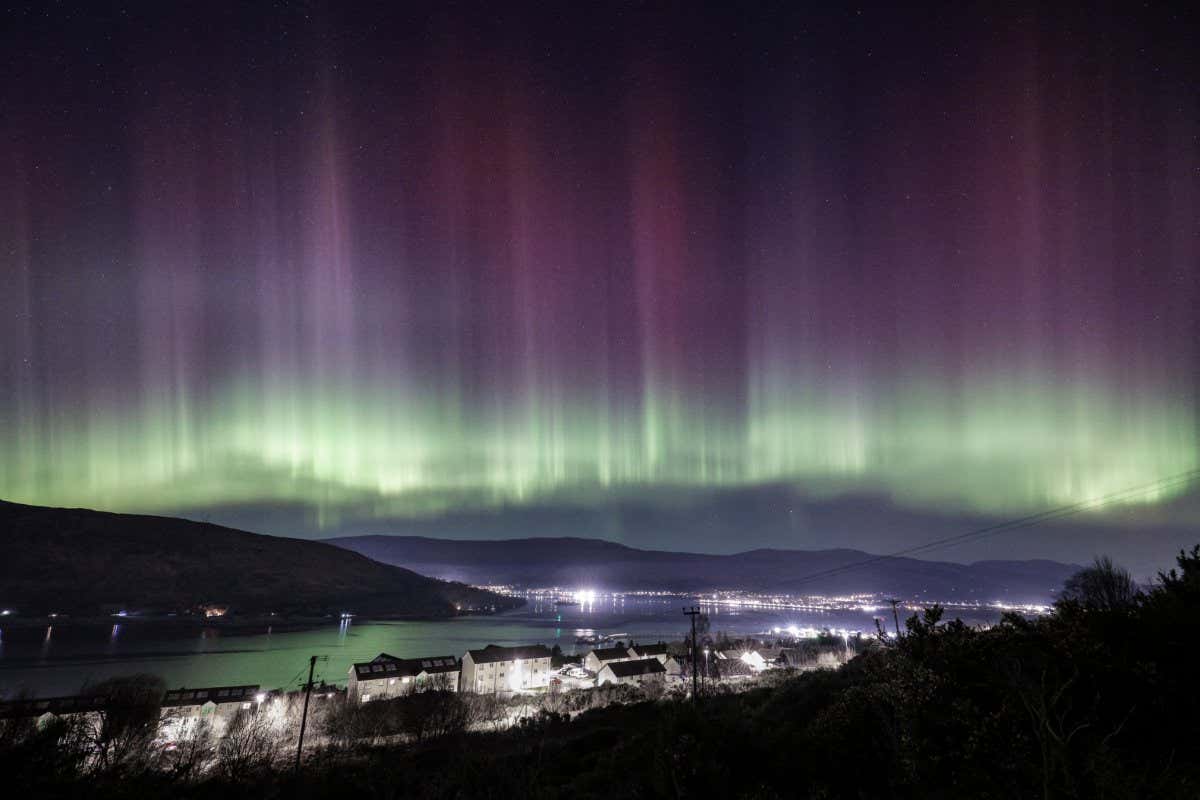UK's Northern Lights: Breathtaking Images Capture Stunning Aurora Borealis Display
The UK experienced a rare and spectacular celestial event this week: a vibrant display of the Northern Lights, also known as the Aurora Borealis. Stunning images are flooding social media, showcasing the ethereal green, sometimes purple and red, curtains of light dancing across the night sky. This unexpected aurora borealis sighting has captivated the nation, offering a breathtaking spectacle for those lucky enough to witness it.
A Rare Treat for UK Stargazers
Sightings of the Aurora Borealis in the UK are uncommon, typically confined to the northernmost parts of Scotland. However, this week's geomagnetic storm, caused by a coronal mass ejection from the sun, pushed the aurora further south than usual, making it visible across a much larger area of the UK, including parts of England and Wales.
This unexpected celestial show delighted amateur astronomers and astrophotographers alike, who captured breathtaking images of the aurora painting the night sky with vibrant colours. The intensity and visibility of the lights varied depending on location and light pollution, but many reports describe an unforgettable experience.
Where Were the Best Views?
While sightings were reported across the country, the best views were generally concentrated in areas with minimal light pollution. Northern Scotland, as always, offered the most spectacular displays. However, reports also emerged from locations in northern England and even as far south as Wales, showcasing the extraordinary reach of this geomagnetic storm. Social media platforms like Twitter and Instagram are brimming with incredible photographs and videos, many highlighting the unexpected beauty of the aurora over familiar landscapes.
- Scotland: Locations like the Scottish Highlands, Shetland, and Orkney Islands offered stunning, prolonged views.
- Northern England: Parts of Northumberland and Cumbria reported clear sightings.
- Wales: While less common, some lucky observers in the northern parts of Wales also witnessed the aurora.
How to Capture Your Own Aurora Photos
Inspired to try your hand at astrophotography? Here are a few tips for capturing the next aurora:
- Find a dark location: Light pollution is the enemy of aurora photography. Get away from city lights for the best results.
- Use a camera with a manual mode: You'll need control over shutter speed, aperture, and ISO.
- Use a tripod: Long exposures are essential for capturing the aurora's faint light.
- Experiment with settings: Start with a long exposure (10-30 seconds) and adjust ISO and aperture as needed.
- Check the aurora forecast: Websites and apps provide predictions of aurora activity.
The Science Behind the Spectacle
The Aurora Borealis occurs when charged particles from the sun interact with the Earth's atmosphere. These particles are channeled along the Earth's magnetic field lines, colliding with atoms and molecules in the upper atmosphere. This collision excites the atoms, causing them to release photons – light – creating the stunning displays we see. The intensity and color of the aurora depend on the type of atoms and molecules involved and the energy of the solar particles.
This week's powerful solar storm resulted in a significant increase in these charged particles, leading to the wider and more intense display of the aurora than typically seen in the UK.
Looking Ahead
While this week's display may be over, there's always the possibility of future aurora sightings in the UK, especially during periods of increased solar activity. Keep an eye on space weather forecasts and be ready to grab your camera! You might just be lucky enough to witness this breathtaking natural phenomenon for yourself.
Keywords: Northern Lights, Aurora Borealis, UK, Scotland, England, Wales, astrophotography, space weather, geomagnetic storm, solar storm, celestial event, breathtaking images, aurora forecast, photography tips
Internal Links: (You would insert internal links here to other relevant articles on your website, if applicable. For example, articles on astrophotography tips or space weather.)
External Links: (You would insert external links here to reputable sources providing aurora forecasts or information on space weather. Examples include spaceweatherlive.com or the NOAA Space Weather Prediction Center.)

